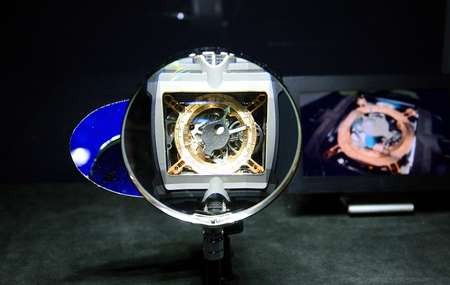Antikythera Mechanism goes on display
Athens News, 5th April 2012

The main exhibition sponsor, Swiss watchmaker Hublot, has produced this modern reconstruction of the Antikythera mechanism. The original and reconstruction are among the many objects on display in the exhibition (Photo: Eurokinissi)
The world's oldest known complex scientific calculator, the Antikythera Mechanism, goes on display at the National Archaeological Museum on Friday.
The exhibition, entitled "The Wreck of Antikythera: The Ship, the Treasures, the Mechanism", runs from April 6 to 28 April 2013.
The device, which dates from 150-100 BC, is an ancient mechanical computer designed to calculate astronomical positions and serve as a navigation tool. It preceded the first clockwork devices in Western Europe by about a thousand years.
Made of bronze, it was about 33cm high, 17cm wide, and 9cm thick and was originally mounted in a wooden frame. It is inscribed with a text of over 2,000 characters, many of which have only just recently been deciphered.
The mechanism itself was discovered in 1901, when archaeologist Valerios Stais noticed that a piece of rock recovered from an ancient shipwreck site had a gear wheel embedded in it.
The wreck had been found a year earlier by a sponge diver, at a depth of 42m off the island of Antikythera, which is between Kythera and Crete.
Subsequent examination revealed that the "rock" was in fact a heavily encrusted and corroded mechanism that had survived the shipwreck in three main parts and dozens of smaller fragments.
More recent examinations using X-ray technology revealed that the 82 surviving fragments contain over 30 gear wheels.
This is the first time that all the 378 findings from the Antikythera wreck will be displayed. Indeed, some of the items have never been seen by the public.
•The National Archaeological Museum is located at 44 Patision St, Exarchia. The exhibition runs from 6 April 2012 to 28 April 2013.
For more info, visit www.namuseum.gr